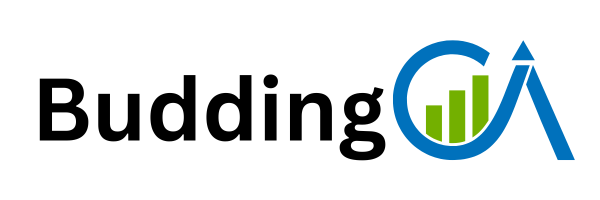Securing a position in a reputed audit firm through ICAI campus placements is the dream of many aspiring Chartered Accountants. To help you prepare well, this article lists and explains the most commonly asked statutory audit domain interview questions. The focus is on clarity, practical knowledge, and understanding key audit concepts that recruiters often test during interviews.
1. Understanding the Audit Process and Cycle
Q: Can you explain the audit cycle or audit process briefly?
An audit generally follows a systematic cycle, starting with planning and risk assessment, moving to internal control evaluation, substantive testing, and finally reporting.
- Planning: Understand the client’s business, industry, and risks.
- Risk Assessment: Identify areas of potential material misstatement.
- Controls Testing: Evaluate whether internal controls are effective.
- Substantive Procedures: Test transactions and balances to verify accuracy.
- Audit Reporting: Form and issue the audit opinion based on findings.
Knowing this cycle helps the interviewer assess your understanding of the audit workflow.
2. Materiality in Audit
Q: What is materiality and why is it important in an audit?
Materiality refers to the threshold above which any misstatement or omission can influence the economic decisions of users of financial statements. It helps auditors focus on significant areas and determine the nature, timing, and extent of audit procedures.
Q: How is materiality calculated? What factors do you consider?
Materiality is often calculated based on benchmarks like profit before tax, total revenue, total assets, or equity. Factors to consider include:
- Size and nature of transactions.
- Industry practices.
- Client’s financial condition.
- Qualitative factors such as legal or regulatory requirements.
Understanding performance materiality and clearly trivial threshold is also important as per SA-320.
3. Internal Financial Controls (IFC)
Q: What is Internal Financial Control (IFC) in audit and why is it significant?
IFC refers to the policies and procedures implemented by a company to ensure reliable financial reporting, compliance with laws, and effective operations. Auditors test IFC to assess risk and plan substantive audit procedures.
Q: Is there a reporting requirement for IFC in the audit report?
Yes, under the Companies Act, auditors of certain companies must express an opinion on the adequacy and operating effectiveness of IFC over financial reporting.
Q: What happens if controls are not operating as intended?
If controls fail, auditors increase substantive testing. They may also qualify their audit report if the control deficiency is significant and leads to material misstatement.
4. Key Observations During Articleship
Q: What were some key audit observations during your articleship, and how did you handle them?
This question tests practical experience. Mention real instances, such as:
- Identifying discrepancies in inventory valuation.
- Noting weaknesses in bank reconciliation procedures.
- Handling incomplete documentation.
Explain how you reported these to seniors and the corrective actions taken.
5. Ind AS 116 – Leases
Q: What are the key differences between Ind AS 116 and the earlier Ind AS 17?
Ind AS 116 introduces a single lessee accounting model requiring recognition of a Right of Use (ROU) asset and lease liability on the balance sheet, eliminating the distinction between finance and operating leases for lessees.
Q: What are the exemptions under Ind AS 116?
- Short-term leases (lease term less than 12 months).
- Low-value leases (e.g., laptops, small office equipment).
6. Ind AS 115 – Revenue Recognition
Q: What is the five-step model of revenue recognition under Ind AS 115?
- Identify the contract with the customer.
- Identify the performance obligations.
- Determine the transaction price.
- Allocate the transaction price to performance obligations.
- Recognise revenue when the performance obligation is satisfied.
Q: What are the methods of revenue recognition and their conditions?
- Point in time: Revenue is recognised at a specific moment when control passes to the customer.
- Over time: Revenue is recognised over a period, e.g., construction contracts.
Conditions for over time recognition include customer control and enforceable right to payment.
7. Audit Procedures for Key Areas
Q: How do you audit Property, Plant and Equipment (PPE)?
- Verify additions and disposals.
- Check depreciation calculations based on useful lives per Schedule II.
- Physically inspect assets and match with fixed asset register.
Q: How do you audit trade receivables?
- Review ageing schedule.
- Test provisions for doubtful debts or expected credit loss (ECL).
- Confirm balances directly with customers.
Q: How do you test payroll?
- Check completeness of employee records.
- Verify salary calculations and statutory deductions.
- Reconcile payroll with bank payments.
Q: How do you ensure revenue is genuine and not fraudulent?
- Review contracts and agreements.
- Check for unusual revenue transactions near year-end.
- Test cut-off procedures by verifying journal entries.
- Confirm revenue through customer correspondence or third-party documents.
8. Basics of Ind AS 109 – Financial Instruments
Q: What are financial instruments?
Financial instruments include contracts that give rise to a financial asset of one entity and a financial liability or equity instrument of another, e.g., loans, receivables, payables, derivatives.
Q: What is Expected Credit Loss (ECL)?
ECL is the anticipated loss due to default on financial assets, requiring provision even before actual default occurs, calculated using models based on historical data and forward-looking information.
9. CARO 2020 – Companies Auditor’s Report Order
Q: What are the key differences between CARO 2020 and CARO 2016?
- CARO 2020 added clauses on benami transactions, fraud reporting, compliance with Section 189 (loans to directors, etc.).
- More detailed reporting on internal audit system and whistleblower policies.
- Applicable for audits of financial statements of companies as per defined criteria.
Q: Is CARO applicable for consolidated financial statements?
No, CARO is applicable only for individual company audits, not for consolidated financial statements.
10. Types of Audit Reports and Opinions
Q: What are different types of audit opinions?
- Unmodified (Clean) Opinion: Financial statements are free from material misstatements.
- Qualified Opinion: Except for certain issues, financials are fairly presented.
- Adverse Opinion: Financial statements are materially misstated.
- Disclaimer of Opinion: Auditor unable to form an opinion due to insufficient evidence.
11. Limited Review vs Statutory Audit
Q: What are the differences between Limited Review (LR) and Statutory Audit?
- LR provides moderate assurance; Statutory Audit provides reasonable assurance.
- LR focuses mainly on analytical procedures and inquiries.
- Statutory audit involves detailed substantive testing and controls evaluation.
- LR is generally for interim financial information; statutory audit is for annual financials.
12. Cash and Bank Balances Testing
Q: What procedures do you perform for cash and bank balances?
- Obtain bank statements and reconcile with ledger.
- Verify cash on hand physically.
- Confirm bank balances through direct confirmation requests.
- Check for outstanding cheques and deposits in transit.
Q: What if confirmations are not received?
Use alternate procedures like reviewing subsequent bank statements, cash book entries, and bank reconciliations to gather sufficient evidence.
13. Audit Assertions
Q: What are audit assertions?
Assertions are representations by management embodied in the financial statements. They are classified into:
- Assertions related to transactions and events: Occurrence, Completeness, Accuracy, Cut-off, Classification.
- Assertions related to account balances: Existence, Rights and Obligations, Completeness, Valuation and Allocation.
- Presentation and Disclosure Assertions: Occurrence and Rights, Completeness, Classification and Understandability, Accuracy and Valuation.
14. Risk Assessment Procedures and Audit Risk
Q: What is Risk Assessment Procedure (RAP)?
RAP involves understanding the entity, its environment, internal controls, and identifying risks of material misstatement to plan audit procedures accordingly.
Q: What is Audit Risk?
Audit risk is the risk that an auditor expresses an inappropriate opinion when the financial statements are materially misstated. It comprises:
15. Controls and Their Importance
Q: What are controls? How do they differ from procedures?
- Controls: Policies and actions designed to prevent or detect errors and fraud.
- Procedures: Steps performed to execute controls.
Q: What are preventive and detective controls? Give examples.
- Preventive controls stop errors before they occur (e.g., authorization of transactions).
- Detective controls identify errors after they occur (e.g., bank reconciliations).
16. Sampling in Audit
Q: What is sampling? How do you select samples?
Sampling involves examining a subset of transactions to draw conclusions about the whole. Samples can be selected using:
- Random sampling
- Systematic sampling
- Haphazard sampling
The choice depends on the audit objective and risk assessment.
17. Nature, Timing, and Extent of Audit
Q: What do you understand by nature, timing, and extent in an audit?
- Nature: Type of audit procedures (inspection, observation, inquiry).
- Timing: When procedures are performed (interim or at year-end).
- Extent: Quantity of audit evidence to be collected.
Conclusion
Preparing well for statutory audit interviews requires a thorough understanding of audit standards, accounting principles, and practical audit procedures. The above questions cover fundamental topics that ICAI campus placement interviewers frequently ask. Focus on clarity, real-life application, and demonstrating how you approach audit challenges effectively.
Being confident with these topics will not only help you clear interviews but also prepare you for a successful career in statutory audit.
Calling all CA dreamers!
🔴 Are you tired of searching for the perfect articelship or job?
Well, fear no more! With 10K+ students and professionals already on board, you don't want to be left behind. Be a part of the biggest community around! Join the most reliable and fastest-growing community out there! ❤️
And guess what? It’s FREE 🤑
✅ Join our WhatsApp Group (Click Here) and Telegram Channel (Click Here) today for instant updates.




